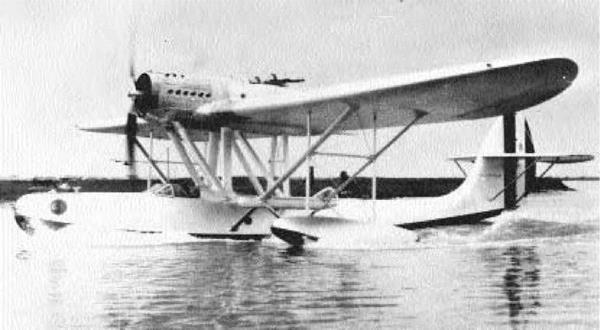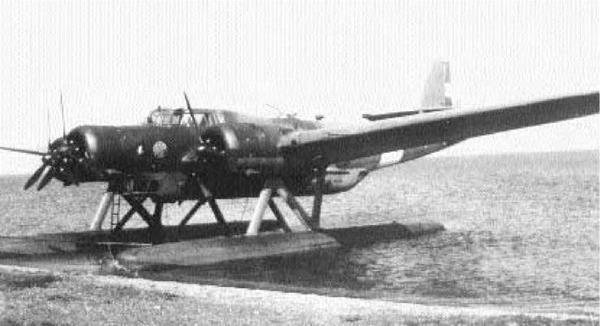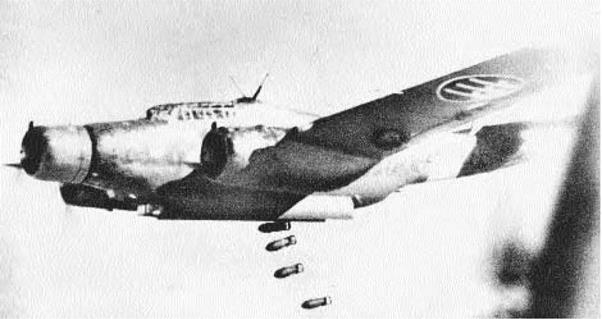. Canadair CL 41 Tutor
Type: Trainer; Light Bomber
Dimensions: wingspan, 36 feet, 6 inches; length, 32 feet; height, 9 feet, 4 inches
Weights: empty, 4,895 pounds; gross, 7,778 pounds
Power plant: 1 x 2,950-pound thrust Orenda J85-CAN J4 turbojet engine
Performance: maximum speed, 480 miles per hour; ceiling, 42,200 feet; range, 1,340 miles
Armament: none, or up to 4,000 pounds of bombs and rockets
Service dates: 1963-
|
T |
he diminutive Tutor remains Canada’s standard jet training craft. As part of the famed Snowbirds demonstration team, it has thrilled thousands of spectators with precision acrobatics.
In 1958 Canadair began investigating the possibly of constructing Canada’s first jet trainer. This was regarded as essential for familiarizing students with the flight characteristics of jet aircraft then entering service in ever greater numbers. However, even when the Canadian government expressed no interest, Canadair continued with a private, company-funded project. The prototype CL 41 took flight in 1960 following a short gestation. It was a low – wing, all-metal monoplane with straight wings and an upward-opening canopy. Pilot and student were seated side by side in a spacious cockpit. The craft also employed a high “T” tail, retractable tricycle landing gear, and air brakes. The CL 41 performed well, and, in parallel with developments in the United States and England, the Canadian government acquired it in numbers. Since 1963, 190 CL 41s, under the official designation CT 114 Tutor, have
been purchased. These are all deployed at the No. 2 Flying School at Moosejaw, Saskatchewan, where pilots are trained up to wing standard and beyond. Other Tutors are employed by the Central Flying School, where instructor-pilots are taught. Their most famous unit, the Snowbirds, is an internationally renowned precision flying group composed entirely of instructors from that school. They operated stock but highly painted CL 41s outfitted with smoke generators for effect.
In the wake of various insurgency movements throughout Asia, the Malaysian government in 1967 needed to acquire an inexpensive strike aircraft. It approached Canadair to produce a militarized version of the Tutor, the CL 41G, which featured more powerful engines and hardpoints for hauling ordnance. Malaysia acquired 20 such machines as the Tebuan (Wasp), which have since been retired due to metal fatigue and corrosion. Canada maintains a fleet of about 100 machines, and they will remain its standard jet trainer well into the twenty-first century.

Type: Patrol-Bomber
Dimensions: wingspan, 73 feet, 10 inches; length, 46 feet, 10 inches; height, 14 feet, 6 inches Weights: empty, 8,466 pounds; gross, 15,510 pounds
Power plant: 1 x 900-horsepower Isotta-Fraschini liquid-cooled inline engine Performance: maximum speed, 171 miles per hour; ceiling, 22,965 feet; range, 1,490 miles Armament: 3 x 7.7mm machine guns; up to 1,404 pounds of bombs Service dates: 1936-1950
|
T |
he Z 501 was a record-breaking flying boat that saw widespread service with Italian forces. Despite obvious obsolescence, it fought actively in World War II and was utilized by both sides.
Cantiere Navale Triestino (CANT) was formed in 1923 to design and build water-based aircraft for civilian and military applications. In 1931 fascist dictator Benito Mussolini dispatched his famous air marshal, Italo Balbo, to lure Filippo Zappata, one of Italy’s finest aircraft designers, back from France. The entreaties worked, and in 1934 Zappata designed his first CANT aircraft—the Z 501. It was a single-engine flying boat constructed entirely of wood and fabric. A study in contrasts, its beautifully streamlined fuselage and gracefully elliptical wings were offset by unsightly bracing. It seated five crew members, including pilot and copilot in the cabin, two gunners, and a flight engineer stationed behind the nacelle to monitor the engine and man a machine gun. In 1934 noted pilot Mario Stoppani flew the prototype on a record-breaking 2,560-mile flight from
Monfalcone to Eritrea. The French subsequently broke the record in 1935, but Stoppani won it back again when his Z 501 ranged 3,080 miles from Mon – falcone to British-held Somalia. Such excellent performance pleased Italian authorities, and in 1936 the Gabbiano (Gull) entered production as the only flying boat in the Regia Aeronautica (Italian air force).
In service the Z 501 was well-liked, being easy to fly and maintain. It initially fought in the Spanish Civil War by conducting bombing missions from Majorca. The Gabbiano flew well, but as a wood and fabric machine it was hopelessly outclassed for the rigors of World War II. Z 501s flew missions throughout the Mediterranean and suffered heavy losses. The craft was also deployed in squadron strength by Romania, which operated on the Black Sea against Soviet forces. By the time of the 1943 Italian surrender, only a handful remained in service, equally divided between pro – and antifascist forces. Several surviving Gabbianos were maintained in service until 1950.

Type: Torpedo-Bomber; Reconnaissance
Dimensions: wingspan, 81 feet, 4 inches; length, 60 feet, 2 inches; height, 17 feet, 1 inch Weights: empty, 19,338 pounds; gross, 30,029 pounds
Power plant: 3 x 1,000-horsepower Piaggio P. XI bis (improved) radial engines Performance: maximum speed, 280 miles per hour; ceiling, 24,600 feet; range, 1,370 miles Armament: 2 x 7.7mm or 12.7mm machine guns; up to 4,410 pounds of bombs or torpedoes Service dates: 1937-1945
|
T |
he Z 506 was one of the most versatile floatplanes ever built and set several world records. It functioned throughout the Mediterranean in World War II as torpedo and reconnaissance craft.
In 1936 Filippo Zapata designed the CANT Z 506A, an all-wood trimotor float transport aircraft. Streamlined and ruggedly built, several were acquired by the airline Ala Littoria and established a reputation for good handling and reliability. That year test pilot Mario Stoppani helped establish 16 world distance and payload records in the Z 506A. Such excellent performance caught the attention of the Regia Aeronautica (Italian air force), and CANT was persuaded to develop a bomber/reconnais – sance version for the military. The prototype emerged in 1937 sporting a long ventral gondola under the fuselage and a dorsal turret. Like its civilian counterpart, the new craft exhibited outstanding aerial and water characteristics. The large streamlined floats were specially designed to enable the craft to take off and land in water as rough
as Force 5 conditions. These excellent seaplanes, designated the Airone (Heron), became operational in 1937, and several campaigned during the closing stages of the Spanish Civil War. By the time Italy entered World War II in 1940, Z 506Bs outfitted two reconnaissance groups.
Airones were initially employed as torpedo – bombers, and against relatively weak aerial opposition they attacked numerous French and Greek targets. They proved less successful facing determined resistance from the Royal Navy, and the slow-flying floatplanes sustained serious losses. Thereafter, most Z 506Bs conducted coastal reconnaissance, convoy escort, and antisubmarine operations. Once the Italian armistice was signed in 1943, 28 Airones managed to reach Allied lines. They were employed as rescue craft in southern Italy until the end of the war. A handful were also operated by the Luftwaffe, and it was a Z 506B that successfully evacuated Mussolini to safety. A total of 563 were built; a handful performed air/sea rescue operations until 1959.

Type: Medium Bomber; Torpedo-Bomber
Dimensions: wingspan, 81 feet, 4 inches; length, 60 feet, 2 inches; height, 17 feet, 1 inch Weights: empty, 19,338 pounds; gross, 30,029 pounds
Power plant: 3 x 1,000-horsepower Piaggio P. XI bis (improved) radial engine Performance: maximum speed, 280 miles per hour; ceiling, 24,600 feet; range, 1,370 miles Armament: 4 x 7.7mm or 12.7mm machine guns; up to 4,410 pounds of bombs or torpedoes Service dates: 1939-1945
|
T |
he graceful Alcione was Italy’s second most important bomber of World War II. Despite wooden construction and weak defensive armament, it rendered useful service on many fronts.
In 1935 Filippo Zapata’s success with the Z 506 floatplane inspired him to explore the possibility of a similar land-based bomber, the first such craft produced by CANT. Two years later the prototype Z 1007 flew as a low-wing monoplane of trimotor configuration. The reason for three motors was that Italian engines produced decidedly lower horsepower. In fact, a competing two-engine design, the Z 1011, was rejected by the Regia Aeronautica (Italian air force) as underpowered. The Z 1007 also employed outdated wooden construction, but that kept its overall weight down. One possible weakness was the armament, which was restricted to four 7.7mm machine guns in dorsal, ventral, and beam-hatch positions. Test pilots nonetheless enjoyed its fine flying characteristics, and in 1939 it entered production as the Alcione (Kingfisher). When
Italy joined World War II in 1940, only 55 Z 1007s were available. Many were the bis (improved) model, featuring heavier guns and better engines. Curiously, the Alciones were built in both single – and twin-rudder configurations, without differing designations, flying side by side in the same squadrons.
In service the Alcione was Italy’s most important bomber after the SM 79 Sparviero. They ranged the length of the Mediterranean and performed bombing missions in Greece, France, North Africa, and Russia. The Z 1007 was also quite adept at antishipping functions and could be outfitted with a pair of 1,000-pound torpedoes. Even though a good basic design and easy to fly, the Alcione remained poorly defended and suffered heavy losses at the hands of Royal Air Force fighters. This resulted in curtailment of daylight operations over Malta in favor of night bombing. After the Italian surrender of 1943, Alciones continued serving both sides up through the end of the war. A total of 563 were constructed.










